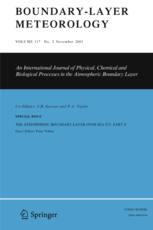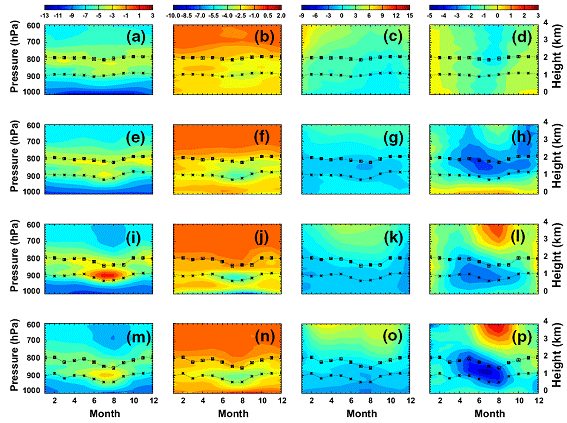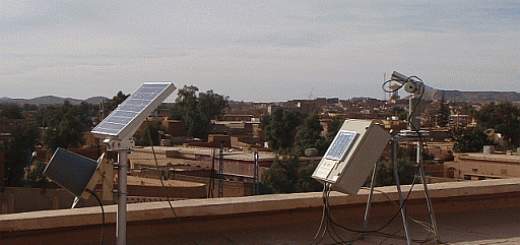Characterization of the Marine Boundary Layer and the Trade-Wind Inversion over the Sub-tropical North Atlantic

This is the title of a new paper recently published in Boundary-Layer Meteorology. This paper tackles the stability of the lower troposphere along the east side of the sub-tropical North Atlantic by using upper air meteorological long-term records at the Canary Islands (Tenerife), Madeira (Madeira) and Azores (Terceira) archipelagos. This is the first time that temperature inversions in the lower troposphere of the Macaronesian region are analyzed and characterized in a joint manner and using a novel approach.
The most remarkable characteristic of the lower troposphere stability is that in summertime a stability strengthening centred at levels near 900 and 800 hPa in a significant percentage of soundings (ranging from 17 % in Azores to 33 % in Güimar, Canary Islands) is found. The authors show that this double structure is associated with the top of the marine boundary layer (MBL) and the trade-wind inversion (TWI) respectively. The top of the MBL coincides with the base of the first temperature inversion (≈900 hPa) where a sharp change in water vapour mixing ratio is observed. A second temperature inversion is found near 800 hPa, which is characterized by a large directional wind shear just above the inversion layer, tied to the TWI (see Figure below). This is a novel result since the temperature inversion associated with the trade wind was traditionally considered as a single inversion, when in fact, two temperature inversions spaced approximately one Kilometre of altitude are detected in an important percentage of summer days.

Figure; Annual cycle of the lapse rate (K km−1), first column; gradient of mixing ratio dr/dz (g kg−1 km−1),second column; and zonal and meridional wind speed (m s−1), third and fourth columns, respectively. All of the figures have been calculated using only data from soundings with two inversions detected in the 1000–700 hPa range, at Azores (a–d), Madeira (e–h) and Canary Islands: Santa Cruz (i–l) and Güimar (m–p). Dotted lines indicate the average height of the base of the first (*) and second (_) inversion layer. Error bars represent the standard error.
The authors found that seasonal and latitudinal variations of the height and strength of both temperature inversions are driven by large-scale subsiding air from the upper troposphere associated with the descent branch of the Hadley cell. Increased general subsidence in summertime enhances stability in the lower troposphere, more markedly in the southern stations, where the inversion-layer heights are found at lower levels enhancing the main features of these two temperature inversions. A simple conceptual model that explains the lower tropospheric inversion enhancement by subsidence is proposed.
The complete reference of the paper is:
J. Carrillo, J. C. Guerra, E. Cuevas, J. Barrancos, Characterization of the Marine Boundary Layer and the Trade-Wind Inversion over the Sub-tropical North Atlantic, Boundary-Layer Meteorology, 1-20, doi:10.1007/s10546-015-0081-1, 2015.







